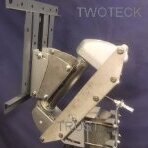faq: Telnet verbinding met je Dreambox
-
Wie is er online 0 leden
- Er zijn geen geregistreerde gebruikers deze pagina aan het bekijken
-
Gerelateerde inhoud
-
- 3 reacties
- 542 weergaven
-
- 126 reacties
- 177.386 weergaven
-
- 365 reacties
- 399.425 weergaven
-
- 21 reacties
- 3.738 weergaven
-
- 8 reacties
- 4.424 weergaven
-
- 1 reactie
- 172.579 weergaven
-
- 61 reacties
- 16.336 weergaven
-






Aanbevolen berichten
Maak een account aan of log in om te reageren
Je moet een lid zijn om een reactie te kunnen achterlaten
Account aanmaken
Registreer voor een nieuwe account in onze community. Het is erg gemakkelijk!
Registreer een nieuwe accountInloggen
Heb je reeds een account? Log hier in.
Nu inloggen